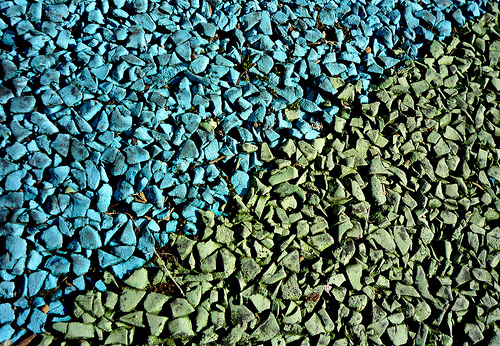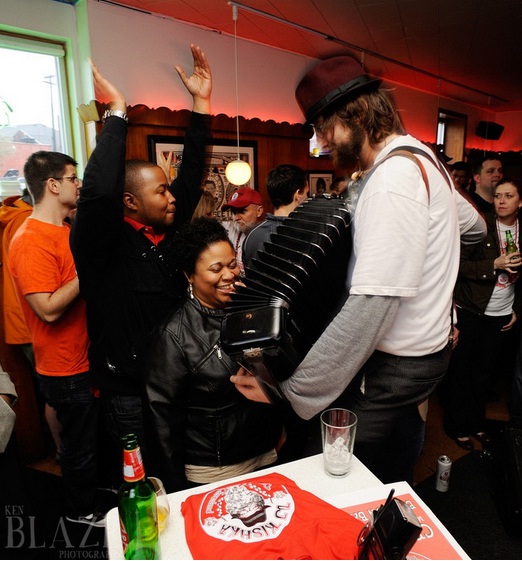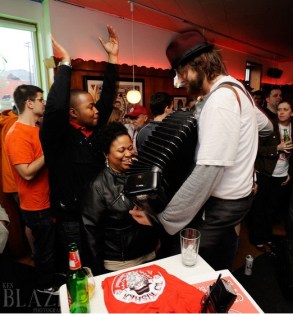 A version of this story first appeared in Rustwire.
A version of this story first appeared in Rustwire.
I think that troubled cities often tragically misinterpret what’s coolest about themselves. They scramble for cure-alls, something that will ‘attract business,’ always one convention center, one pedestrian mall or restaurant district away from revival. They miss their biggest, best, and probably most marketable asset: their unique and slightly off-center character. Few people go to New Orleans because it’s a ‘normal’ city — or a ‘perfect’ or ‘safe’ one. They go because it’s crazy, borderline dysfunctional, permissive, shabby, alcoholic, and bat shit crazy — and because it looks like nowhere else. Cleveland is one of my favorite cities. I don’t arrive there with a smile on my face every time because of the Cleveland Philharmonic.
— Anthony Bourdain
It’s branding season again in my hometown of Cleveland. The Plain Dealer just announced plans to help rebrand the Mistake on the Lake “to change not only the look and feel of our region’s ‘capital city’ … but also the way the world and Clevelanders themselves look at it.”
Well, good luck with that. One need only examine the history of Cleveland’s branding campaigns to know past efforts have been a bit of a mess. There was the corporate-driven, perhaps overly optimistic motto “Best Location in the Nation,” coined by Cleveland Electric Illumination Co. in 1944 and adopted by city leaders. Then the Plain Dealer itself stumbled with a hopelessly hokey 1981 bumper-sticker insert reading, “New York’s the Big Apple, but Cleveland’s a Plum.” You don’t differentiate your city identity through omission, i.e., “we are not New York.” You do it by declaring what you are. And no Cleveland, you are not a plum. Sorry.
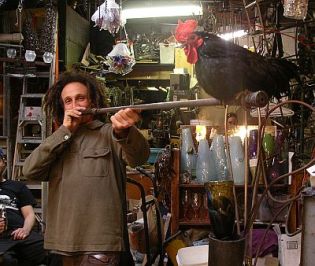 What is it? Well, it is a gritty city in a region increasingly known for its resilience. If Cleveland were a boxer it would be Rocky — raw eggs and all, beef-punching workouts to boot. And in this age of American excess and crumbling infrastructure, Cleveland is cool. From Governing magazine:
What is it? Well, it is a gritty city in a region increasingly known for its resilience. If Cleveland were a boxer it would be Rocky — raw eggs and all, beef-punching workouts to boot. And in this age of American excess and crumbling infrastructure, Cleveland is cool. From Governing magazine:
[A] certain fascination with places that have fallen on hard times like the Rust Belt … has taken hold. Part of it is the scruffy, industrial look. It may also be a rejection of cities with gleaming condo towers, bistros and boutiques that were once so trendy yet now seem so frothy and fake in the wake of the economic meltdown … The other fascination is the defiance these Rust Belt cities have shown.
Call it Rust Belt chic. Originating out of the blog i will shout Youngstown, Rust Belt chic is part aesthetic: the warmth of the faded, and the edge in old iron and steel. It’s also part old-world, working culture, like the simple pleasures associated with bagged lunchmeat and beaten boots in the corner. And then there is grit, one of the main genes in the DNA of American coolness. Cleveland-bred and New York-based writer Pete Beatty sums it up this way:
… the inevitable human tendency toward nostalgia, the birth and death of punk, the early, hardscrabble days of hip-hop, downtown/heroin chic, Bukowski, Taxi Driver, Tom Waits, Bruce Springsteen, The Outsiders, steeping in a stock of history: white flight, urban blight and renewal, crime, deferred maintenance of both the physical and notional infrastructure.
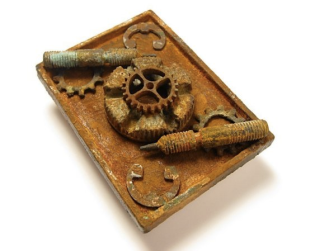
Rust belt chic? Belt and Image by Dylan Johnson at Etsy.
The problem for Rust Belt branding is that folks who make the official branding decisions — mayors, developers, marketing consultants, and their ilk — barely give Rust Belt chic a sniff. “Cool” to these folks means a rock hall exhibit or an aquarium. It means largely showing off what you have that other cities have instead of differentiating yourself from the pack.
So what would a Rust Belt chic branding campaign look like? Well, as far as mottoes, there is “Cleveland: You’ve Got to Be Tough!“ The saying was birthed on a T-shirt in the ’70s by Daffy Dan, Cleveland’s iconic haberdasher. The saying is simple. True. Cleveland is both rough and lovable, and Clevelanders’ attachment to place arises out of the shared experience of getting up when so much around you has fallen down.
Or how about this beauty, originally arising out the Cleveland Chaos movement and recently put to graphics:
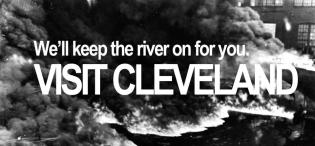
It refers, of course, to the Cuyahoga, which was so polluted with industrial effluent that it caught fire numerous times before it was finally cleaned up. The key to this tag line is turning a perceived weakness into a strength; that is, we caught our lifeblood on fire making your country, and then we cleaned to remake ourselves.
As for marketing places and events, the following short list of nominees have my Rust Belt chic branding vote.
1. The industrial flats: At the spot where the mouth of the Cuyahoga meets Lake Erie, this is the place where Cleveland was born. The once-swampy landscape morphed into industry, then abandonment, then a spot of nightlife, then into what comic Mike Polk famously referred to as a “Scooby Doo ghost town.” The area is intriguing, not only because it fosters Cleveland’s best pieces of public art — its old bridges — but because it is slowly morphing into Cleveland’s version of muscle beach. Joggers. Kayakers. Folks carrying weights along unused railroad lines that wrinkle the topography with history. Rust Belt chic for sure.
2. Polka happy hour with DJ Kishka: Eastern Europe has deep roots not only in Cleveland, but the Rust Belt in general. Polka was huge in Cleveland for decades, with “America’s Polka King,” Frankie Yankovic, hailing from the area. Now polka gets played on turntables by DJ Kishka, who entertains a mix of old Poles and young hipsters once a month at spot on the city’s Near West Side called Happy Dog. (Click here for the full monty.)
3. The Glass Bubble Project: In the shadow of the West Side Market, the Glass Bubble Project is part gallery, part performance art, part DIY everything, part retail, part ad hoc bar. Besides the beautiful blown glass, there is a rooster, birds flying around via a hole in the roof, and a hot water tank collecting residual heat from a kiln fashioned via an old oil drum. Quirky and hardscrabble, yeah. Beautiful industrial design, yeah. Cleveland, yeah.
So now for the big question: How do you reduce it all to a marketing slogan? You probably can’t. But if this city is going to brand — and they are, because that’s what cities do — then let Cleveland be. Because nobody likes a fake. Especially when the Rust Belt brand is about being as real as possible.
We’re looking for the goofiest city re-branding campaigns ever! Got a lousy city slogan or a mind-bogglingly bad p.r. campaign? Put it in the comments below! We’ll publish the best (worst) later this week.
